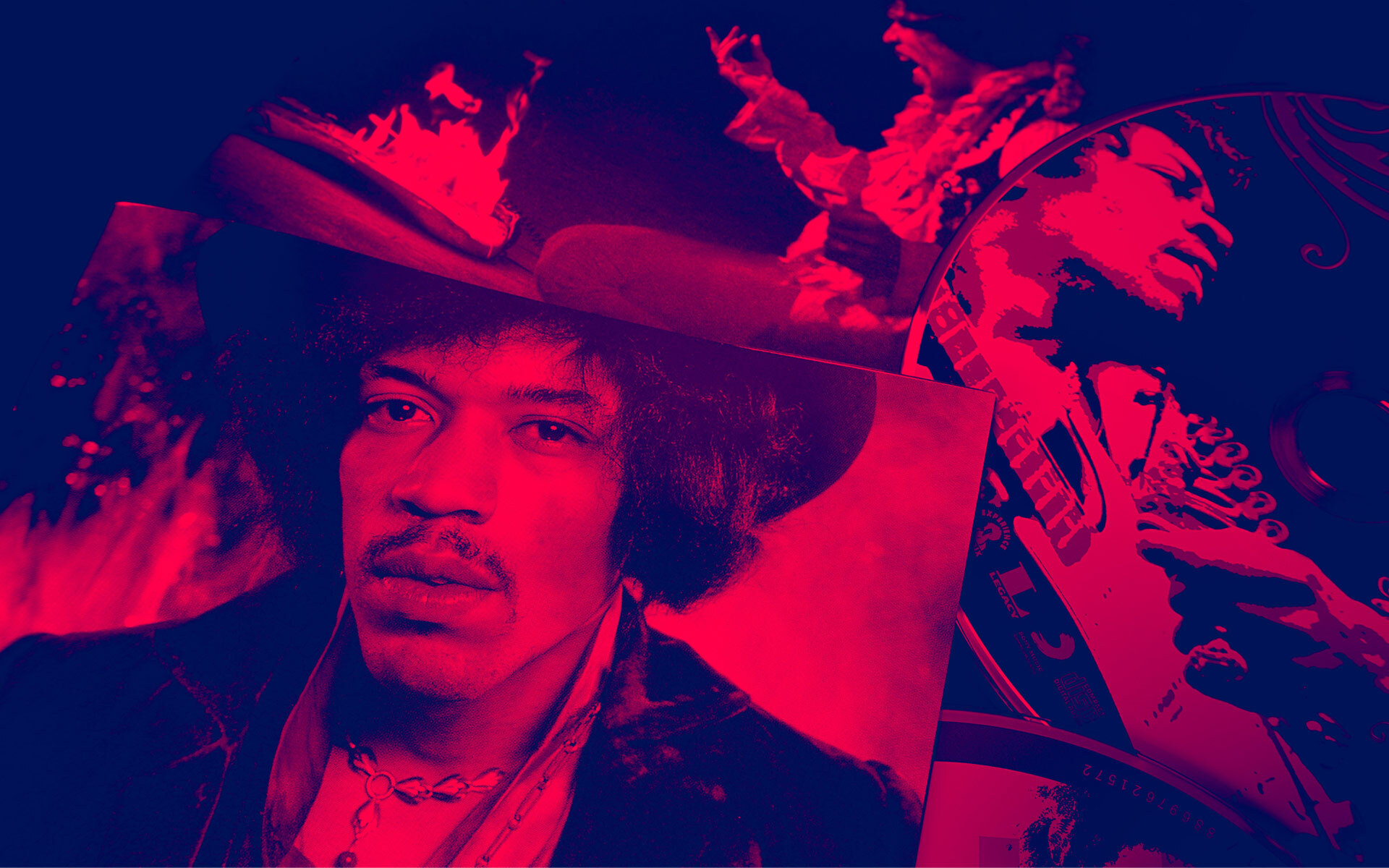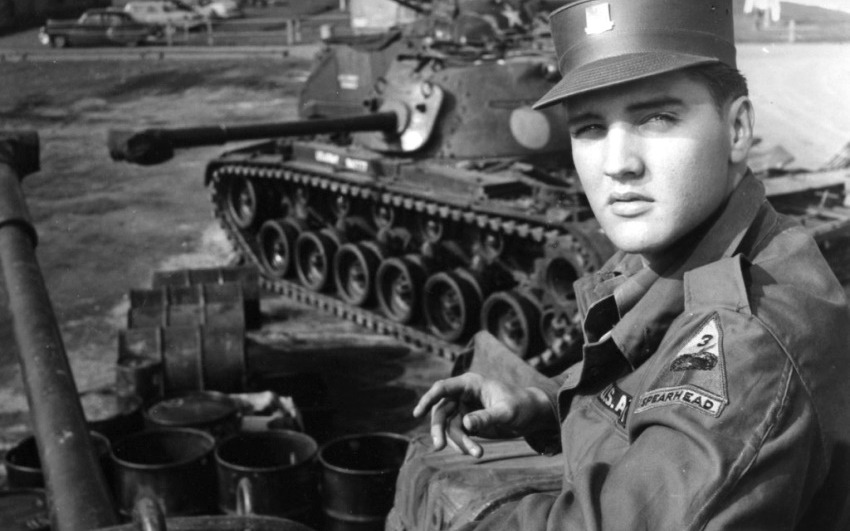Have you ever listened to a song and wondered why a certain instrument sounds so good? Jimi Hendrix, Django Reinhardt, or Louis Armstrong all reshaped the way we think of their instruments! Let’s take a look at 10 twentieth century musicians who have forever changed the way we play.
Jimi Hendrix
Jimi Hendrix is one of the most important electric guitar players in history, and is arguably the creator of the modern electric guitar sound. In addition to his solid foundations in blues, Hendrix was also a versatile guitar player in styles such as rock, jazz, soul, British rock, and psychedelic rock. His versatility, combined with his expressive technique and his experimental approach to music technology led to the signature sound of his music.
Hendrix used an old blues technique, using the thumb of his fretting hand to play the bass notes. By applying this technique to electric guitar, he could use the other four fingers more freely to create distinct voicings, which can be heard on songs like “The Wind Cries Mary,” “Bold As Love,” and “Little Wing.”
Hendrix also used pedal effects in many of his songs. The pedals he used included fuzz pedals (such as Roger Mayer Octavia and Dallas Arbiter Fuzz Face), along with the Uni-Vibe pedal, distortion, wah wah, and other effects. He was not the first one to use pedal effects, but he used them in a clear and expressive way that made the guitar the lead act of a song.
In addition to his guitar work, Hendrix also produced and mixed his own albums. He even started his own studio in New York, Electric Lady studios in Greenwich Village, which he designed with Berklee Online course author John Storyk.
Django Reinhardt
Along with Hendrix, Django Reinhardt is considered one of the most influential guitarists of all time, with one of the best techniques and articulations. What may be most remarkable though is that he achieved this level of playing by mostly using just two fingers of his fretting hand.
When he was 18 years old, Django Reinhardt had an accident and lost functionality in two of his fingers, leaving him with only his index and middle finger to play guitar. He was forced to figure out how to solo with two fingers, which brought out his impeccable articulation.
Additionally, he created his own signature chord voicings, which became the basis of the style of music that is called “Gyspy Jazz” or “Manouche” today. He was still able to use the injured fingers for playing certain chords, but they had limited strength and mobility. But had that accident not happened, perhaps we would not have this style of music today. Django definitely gave the world a life lesson about turning a crisis into an opportunity!
Larry Graham
If you’ve ever heard funk music, then you have heard of slap bass, the bass technique that was brought to popularity by Larry Graham, bassist for Sly and the Family Stone. The slap bass, which Graham originally referred to as “thumpin’ and pluckin’,” comes from a percussive technique where the bassist uses the thumb and mostly the index finger to create a percussive effect. The thumb represents the kick drum while thumping, and the index finger represents the snare while it is plucking.
Though the slap bass technique has roots in New Orleans jazz as early as 1918, it wasn’t until Graham came along that it became one of the most important techniques in electric bass, which has been used by a new generation of famous bass players that came after, such as Janice-Marie Johnson, Marcus Miller, and Victor Wooten. If you want to learn more about Larry and all of these other players, Berklee Online’s Slap Bass course is a great place to start.
Louis Armstrong
Louis Armstrong is one of the greatest trumpet players of all time, and he is sometimes dubbed as “the first great soloist” in jazz. Louis Armstrong is credited as the person who made trumpet a solo instrument, or the lead instrument in a band.
Armstrong innovated the trumpet by changing the phrasing. Before him, the typical phrasing of trumpet was more staccato, where each note is played sharply, and it is rhythmically detached from the other notes. Armstrong transitioned the trumpet into a more relaxed phrasing, where he connected each note smoothly to the next. Rhythmically, he would also use a relaxed swing feel, which is considered to have influenced the soloists after him.
From an improvisational perspective, Louis Armstrong avoided over-technical solos and instead preferred to improvise by taking a melodic motif and enriching it by the use of rhythm, harmony, and shape. His melodic approach to improvisation probably has to do with him also being a singer. Armstrong also used pitch bending, which might also be coming from his background as a singer.
His use of complex rhythms and swing was a big part of his technique and it had a big impact in making swing more popular in jazz music in the following years.
Gary Burton
Gary Burton invented the “Burton Grip” on mallets, which introduced new possibilities to vibraphone, and made the instrument more adaptable to jazz. This technique has allowed the vibraphone player to easily switch from four-part chord accompaniment to soloing, or vice versa.
The traditional mallet grip didn’t give players as much control or stability: most players would use four mallets when playing chords, and when it was their turn to solo, they would put down two of the mallets and just solo with the other two. Burton realized he would sometimes come up with four-part chord ideas during a solo, but the traditional grip wouldn’t let him switch in time. Recognizing a need to find a way to use four mallets at all times—where he could solo and also play chords when he wanted to—he invented the “Burton Grip,” when he was only a high school student. He did NOT name it the “Burton Grip,” however. See the video below for his explanation!
Burton’s innovation expanded the scope of vibraphone into the realm of jazz and he has collaborated with a long list of legendary musicians, including Astor Piazzolla, Herbie Hancock, Chick Corea, Stan Getz, and Pat Metheny. The course he authored for Berklee Online, Gary Burton: Jazz Improvisation, continues to be one of the school’s most revered offerings.
CHECK OUT OUR INTERVIEW WITH GARY BURTON ON THE ‘MUSIC IS MY LIFE’ PODCAST
Phil Cohran
Phil Cohran was a member of the Sun Ra Arkestra and his principal instrument was the trumpet. However, Cohran invented an instrument based on the kalimba, called frankiphone, or also known as Space Harp. The frankiphone was later used by Earth, Wind & Fire as well. This instrument has brought in new melodic and harmonic possibilities, and became the keystone of Cohran’s compositions later on.
Jaco Pastorius
Jaco Pastorius was not only one the greatest bass players of all time, but also one of the most important figures involved in the creation of the modern electric bass sound. He is credited with bringing technique and vocabulary into electric bass in a way that has impacted the instrument immensely.
He used a self-made fretless bass, which really brings new melodic and tone possibilities for the bass player. He also used chorus pedals to create his signature sound and harmonics on bass guitar, which was quite rare before him. Moreover, Pastorius’ precision with timing was impeccable. His version of saxophone legend Charlie Parker’s “Donna Lee” is a good example of how precise his timing was when playing.
Pastorius recorded his legendary 1976 Jaco Pastorius solo bass album at a time when the idea of having a solo bass album was quite revolutionary. He also collaborated with many different musicians, from Joni Mitchell to Herbie Hancock. Watch for the tribute to Hendrix in the following clip.
Ornette Coleman
Ornette Coleman is known as the inventor of “free jazz.” This style of jazz is not a form of atonal music, but a more horizontal approach where harmony is implied through various melodic lines. This is a direct contrast to the classical jazz approach, where the soloist plays scales and melodies over fixed chords for each bar. The way he “freed” jazz helped his music to focus more on rhythm and melody.
Coleman was also famous for playing a plastic saxophone, due to financial difficulties for a period in his career. Using a plastic saxophone interestingly helped him to create his own articulation and his own recognizable sound. Moreover, the fact that he did not have a harmonic instrument like piano in his groups have made his compositions kind of like a bass/saxophone duet, opening up the possibilities even further in the style of free jazz.
Earl Scruggs
Earl Scruggs made the three-string banjo famous with his three-finger picking style. Before him, banjo players would use the “clawhammer” technique, using two fingers. His three-finger picking style could be influenced by classical guitar, as it allowed him to play arpeggios on banjo. Earl Scruggs was also famous for using string bends and creating lead lines that might have also been borrowed from guitar and adapted into banjo.
Earl Scruggs is also credited as the principal musician that developed the banjo technique in bluegrass music. He was a true innovator of the instrument, and he has changed the way it’s been played with his impeccable technique.
James Jamerson
James Jamerson is considered as the first virtuoso bass player and he is credited with having invented the “Motown Sound.” He innovated the bass guitar both harmonically and rhythmically.
Harmonically, most bass players before him would play root notes or 5ths, or play a walking bass line. Jamerson changed this as he started using the 3rds, 7ths, and even tensions on bass! Jamerson also used chromatic scales, which was truly revolutionary on bass guitar at the time.
Jamerson also made bass rhythmically more interesting by using syncopations and sixteenth-note runs, which has had a huge influence on styles like Motown and others that followed.
So in this way, it would be safe to say that he added a rhythmic element to the bass instrument in addition to its harmonic function. Consequently, popular music started using drums and bass as a unit, hence inventing the term “groove.” The bass-drum groove system has changed the contemporary music scene after him forever.
Some of James Jamerson’s recording credits include the Jackson 5, the Isley Brothers, Smokey Robinson, the Temptations, the Supremes, and Stevie Wonder. Check him out below, sitting next to Marvin Gaye, jamming on “What’s Going On.”
All of these musicians listed above have made significant contributions to their instruments. But more importantly, they played a significant role in newer generations of musicians after them. Their innovations ended up shaping the way we hear music today and possibly how music will be played and listened to in the future.












